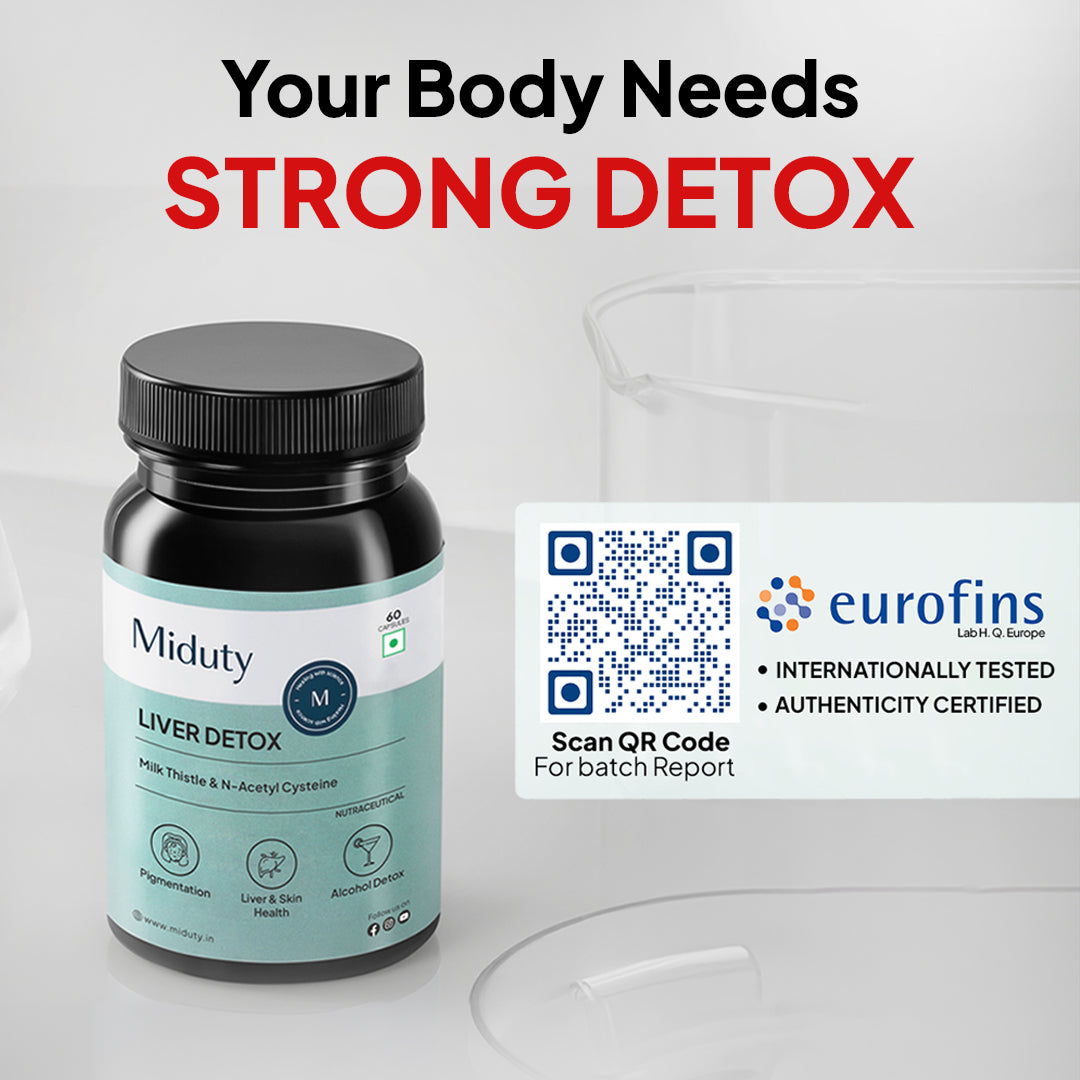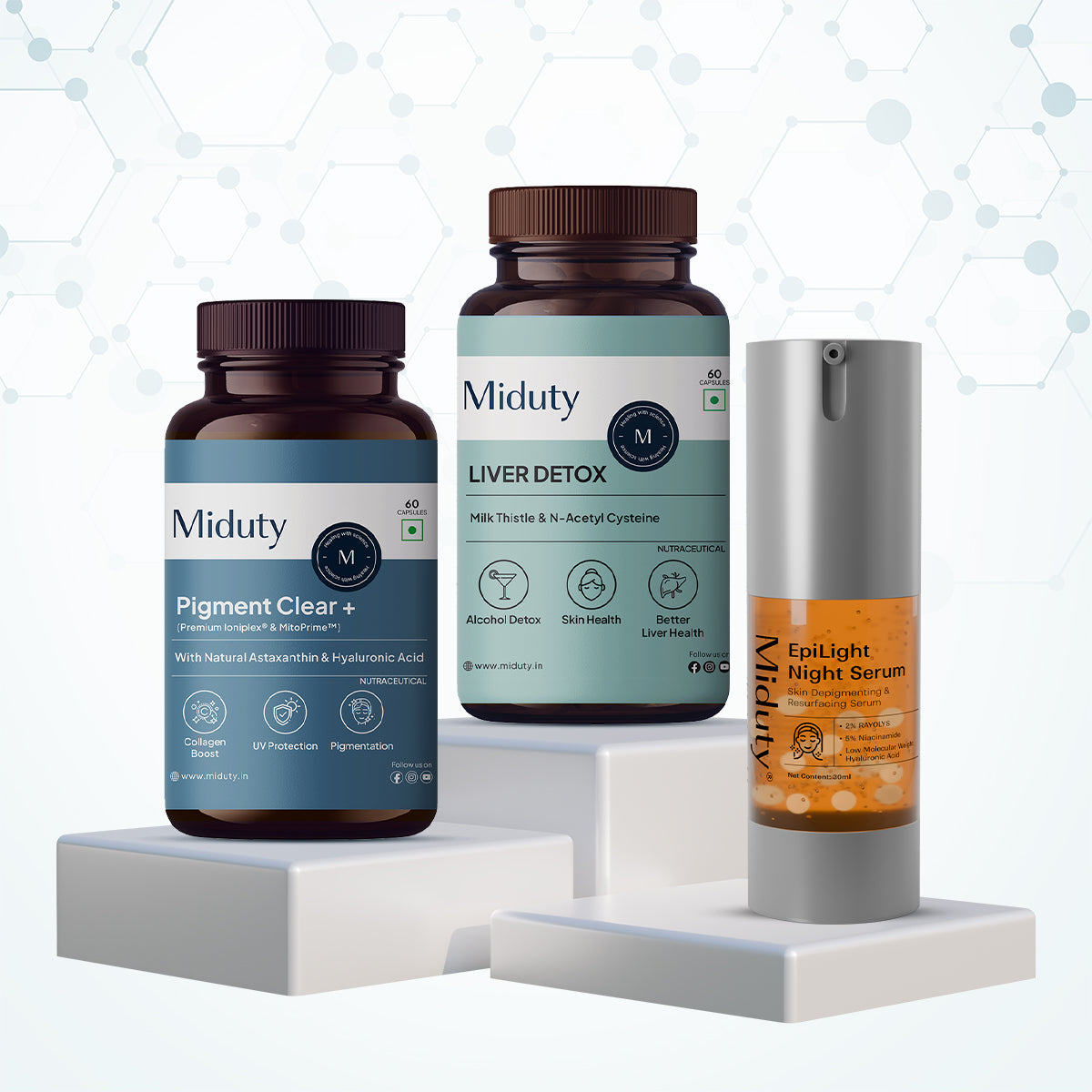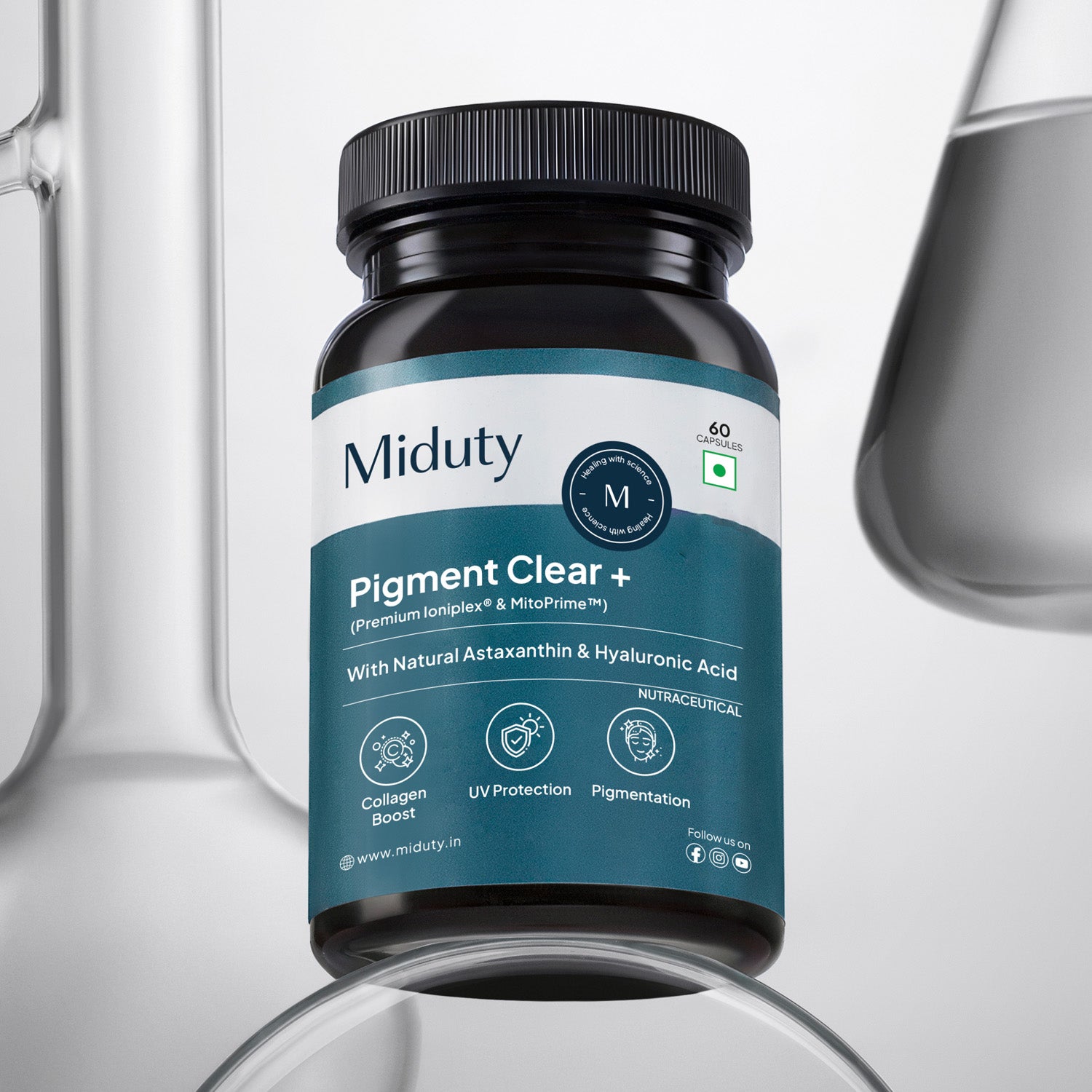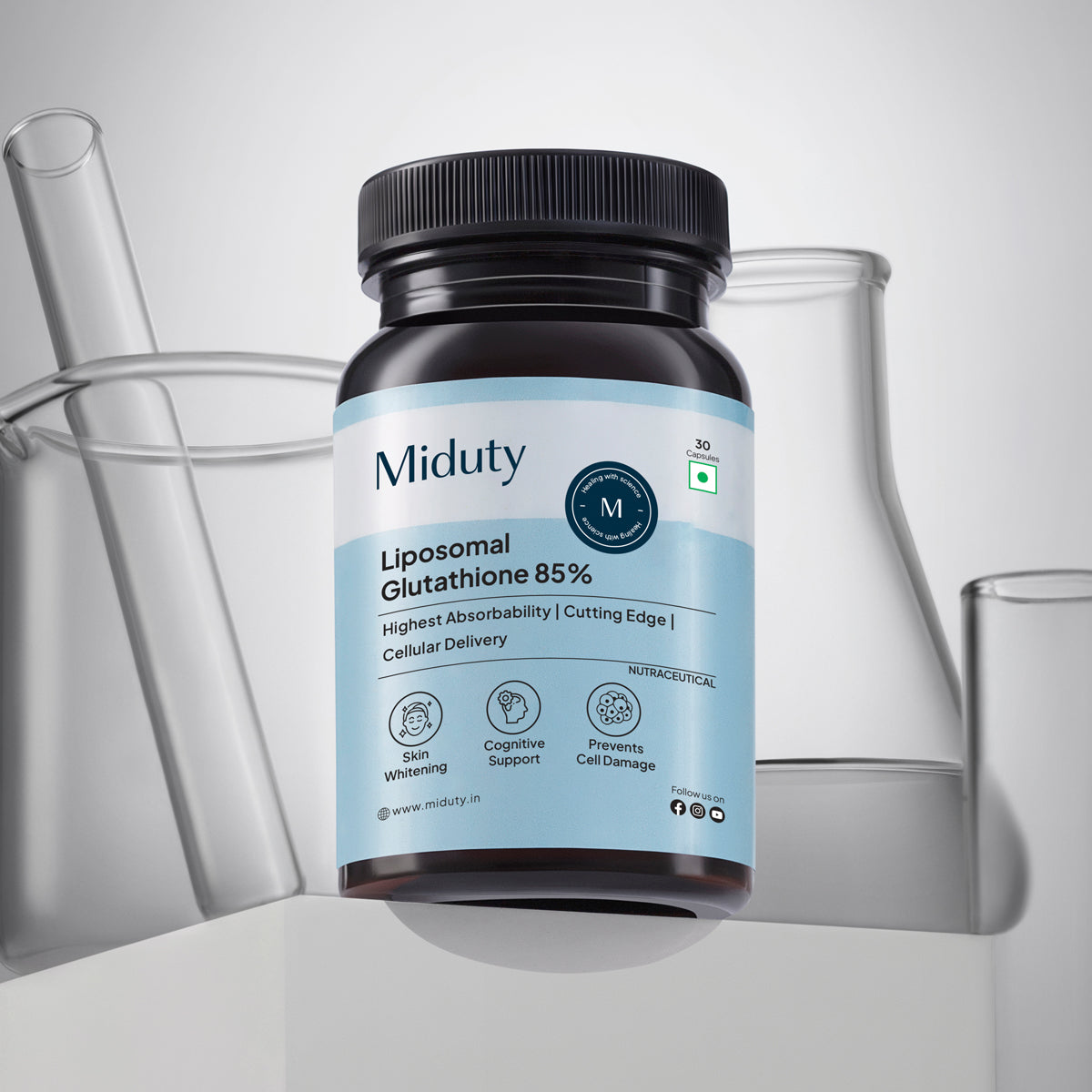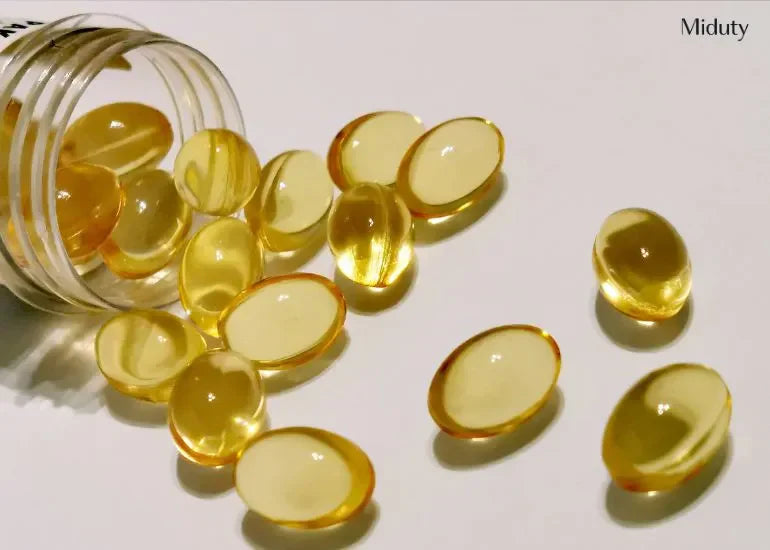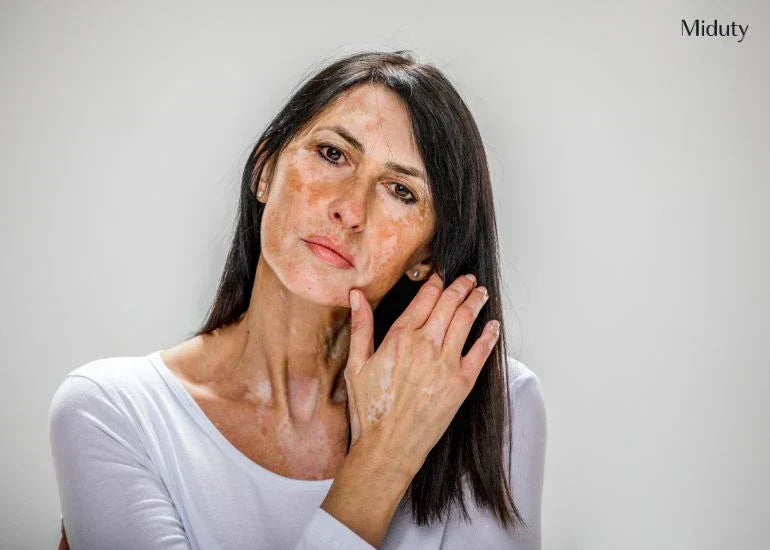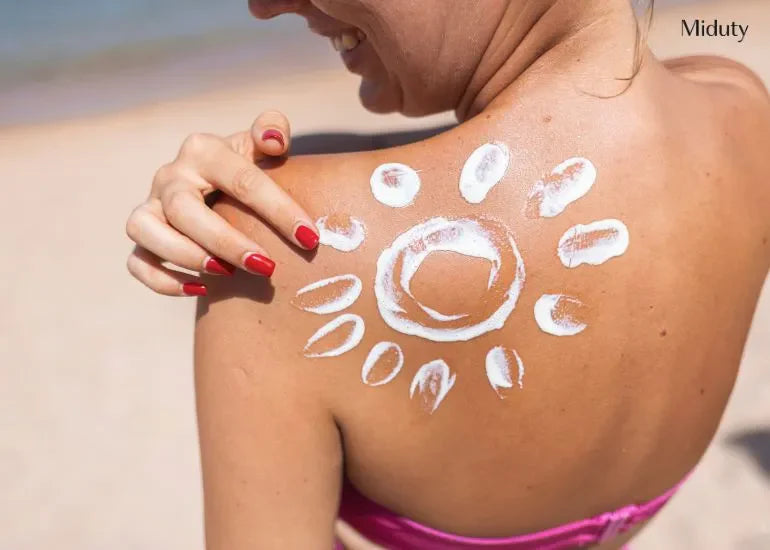
Hypopigmentation: Causes, Types, Diet, Skin Care & Supplements
You notice a pale patch on your skin. At first, you brush it off. But then it spreads or refuses to fade. You start avoiding certain angles in photos, and wondering why your skin just doesn't look "normal" anymore. You scroll through social media, flooded with flawless skin and "miracle" skincare routines, yet nothing you try seems to work. Sound familiar?
Hypopigmentation isn't just a skin concern, it's a confidence killer. The uneven tone, the stares, the confusion about what's causing it and how to treat it—it's overwhelming. And the truth is, while skin-lightening gets a lot of attention online, very few talk about what it really means when your skin loses pigment.
In this blog, we'll break down what hypopigmentation actually is, the conditions behind it—like vitiligo, post-inflammatory hypopigmentation, albinism, and pityriasis alba—and more importantly, what you can realistically do to support your skin both on the outside and from within. No fluff, no fake promises—just facts, care, and solutions that make sense.
Key Takeaways
1. Hypopigmentation affects more than just your skin.Though often harmless, hypopigmentation can deeply impact self-confidence, especially when it appears in noticeable areas. Understanding its causes and treatment options helps reduce stress and confusion around the condition.
2. Knowing the type of hypopigmentation is key. Conditions like vitiligo, albinism, post-inflammatory hypopigmentation, and pityriasis alba all lead to pigment loss but have different causes. Getting the right diagnosis is crucial for choosing the right approach.
3. Diet can support skin repair and pigmentation. While food isn't a cure, nutrients like zinc, copper, vitamin C, B12, and omega-3s can reduce inflammation and support melanin production, helping your skin function at its best.
4. Good skincare protects and supports healing. Using sunscreen, fragrance-free moisturizers, and gentle cleansers helps protect hypopigmented skin, reduce contrast, and prevent further damage or irritation.
5. Supplements help treat from within. NAC, milk thistle, zinc, vitamin B12, and omega-3s support immune balance, detoxification, and melanocyte health, making them helpful additions to your overall skin care plan.
What is Hypopigmentation?
Hypopigmentation refers to areas of skin that become noticeably lighter than the surrounding tissue due to a decreased concentration or complete loss of melanin—the pigment that gives skin its natural color. This condition can affect people of all skin tones, but it tends to be more visually pronounced and emotionally distressing for individuals with darker complexions.
The affected areas may vary in size and shape, and while hypopigmentation itself is usually not harmful or painful, it can have a significant psychological and social impact. People living with visible patches of hypopigmented skin often report lowered self-confidence and may feel self-conscious or stigmatized, particularly when the condition affects highly visible areas such as the face, hands, or neck. Because of this, treatment isn't always about physical health—it's often about restoring a sense of normalcy and improving quality of life.
What Causes Hypopigmentation?
Melanin, the pigment that gives skin its color, is produced by melanocytes found in the epidermis. When these cells are damaged or stop functioning properly, melanin production decreases or stops, leading to hypopigmentation. This results in lighter patches of skin that contrast with the surrounding area. Causes include injury, inflammation, infection, or conditions like vitiligo. Hypopigmentation can be localized or widespread, and its duration may be temporary or permanent. Temporary cases often resolve as skin heals and pigment returns. Permanent cases occur when melanocytes are irreversibly damaged. Treatment depends on the cause and may include medical or cosmetic approaches.
Types of Hypopigmentation
1. Vitiligo
Vitiligo is an autoimmune condition in which the body's immune system mistakenly attacks and destroys melanocytes. This leads to clearly defined white patches of skin that often spread over time.
Key Features
- Common on the face, hands, genitals, and joints
- Often symmetrical
- May cause white or gray hair patches if it affects the scalp or eyebrows
Management Tips
- Topical corticosteroids or calcineurin inhibitors
- Narrowband UVB light therapy
- Skin camouflage products
- Surgical options in some cases (like melanocyte transplantation)
2. Post-Inflammatory Hypopigmentation (PIH)
PIH occurs after skin inflammation, such as acne, eczema, or injury. Once the inflammation resolves, the affected skin may appear lighter due to disrupted melanin production.
Key Features
- Follows an injury or rash
- More noticeable in medium to dark skin tones
- Typically fades over time but may take weeks to months
Management Tips
- Consistent sun protection
- Gentle skin care routine
- Topical treatments like tacrolimus may help in persistent cases
3. Albinism
Albinism is a genetic condition resulting in little or no melanin production. It affects the skin, hair, and eyes and is present from birth.
Key Features
- Pale skin and white or light-colored hair
- Light eyes (blue, gray, or light brown)
- Vision issues like nystagmus and photophobia
Management Tips
- Strict sun protection
- Regular eye exams
- Wearing hats, sunglasses, and protective clothing
- Monitoring skin for sun damage
4. Pityriasis Alba
A common condition mostly seen in children and teens, pityriasis alba presents as pale patches, usually on the face. It's considered a mild form of eczema.
Key Features
- Dry, scaly, pale patches (most commonly on the cheeks)
- May become more obvious after sun exposure
- Tends to resolve on its own
Management Tips
- Use fragrance-free moisturizers
- Gentle cleansers
- Mild topical steroids if needed
- Daily sunscreen to reduce contrast
Dietary Tips for Supporting Hypopigmentation
While food can't cure hypopigmentation, a balanced, nutrient-dense diet can help support healthy skin and immune function, which may be beneficial—especially in autoimmune-related cases like vitiligo or inflammation-driven PIH. Here are key nutrients to focus on:
1. Antioxidant-Rich Foods
Oxidative stress may play a role in conditions like vitiligo. Antioxidants neutralize free radicals, helping reduce skin cell damage.
Include: Berries such as blueberries, strawberries, and blackberries, leafy greens like spinach and kale, bell peppers, broccoli, green tea
2. Foods Rich in Copper
Copper plays a key role in melanin production. A deficiency may impair the function of tyrosinase, an enzyme critical in melanin synthesis.
Sources: Cashews and almonds, mushrooms, sesame seeds, lentils, leafy greens
3. Zinc-Rich Foods
Zinc is essential for immune function and skin repair. It may help reduce inflammation and support skin healing in cases like post-inflammatory hypopigmentation or pityriasis alba.
Sources of Zinc: Pumpkin seeds, eggs, chickpeas, beef and lamb, yogurt
4. Omega-3 Fatty Acids
Omega-3s help reduce systemic inflammation and may support autoimmune balance.
SourcesOf Omega - 3: Fatty fish such as salmon, sardines, and mackerel, chia seeds, flaxseeds, walnuts
5. Vitamin C
Vitamin C is crucial for collagen production and works as an antioxidant. It may help support the skin's structural integrity and pigmentation processes.
Sources of Vitamin C: Oranges and citrus fruits, papaya, guava, kiwi, red bell peppers
6. Vitamin B12 & Folic Acid
Deficiencies in B12 and folate are often observed in individuals with vitiligo. Supplementing these nutrients may improve pigmentation in some cases.
Sources of B12: Eggs, milk and dairy products, fish and meat
Sources of Folate: Spinach, avocado, asparagus, beets
Skin Care for Hypopigmented Skin
While internal factors play a major role in conditions like vitiligo, albinism, or post-inflammatory hypopigmentation, external care is equally essential to protect the skin, prevent worsening, and improve overall skin tone and texture.
Here's how to care for hypopigmented skin effectively:
1. Daily Sun Protection
Hypopigmented areas are more vulnerable to sun damage due to reduced melanin.
- Apply a broad-spectrum SPF 30 or higher daily, even indoors
- Reapply every 2–3 hours when outdoors
- Wear hats, sunglasses, and protective clothing for added coverage
2. Moisturizing
Dry skin can make hypopigmentation more noticeable. A strong moisture barrier helps reduce flakiness and supports healing.
- Use fragrance-free, ceramide-rich moisturizers
- Apply after cleansing and sun exposure
- Opt for emollient-based creams for nighttime hydration
3. Gentle Cleansing
Harsh products can worsen sensitivity or post-inflammatory changes.
- Choose non-foaming, pH-balanced cleansers
- Avoid physical scrubs and alcohol-based toners
- Pat skin dry instead of rubbing
4. Avoid Irritants
Be cautious with:
- Strong exfoliants (like AHAs or retinoids)
- Artificial fragrances
- Chemical peels or aggressive treatments without medical supervision
Supplements for Hypopigmentation
Topical care helps protect and soothe the skin, but supplements support the internal systems that influence pigmentation—especially in cases involving inflammation, oxidative stress, or immune dysfunction. Here are five key supplements that can help support skin from within:
1. N-Acetylcysteine (NAC): NAC boosts glutathione, a powerful antioxidant that helps protect melanocytes from oxidative stress.This can be particularly beneficial in conditions like vitiligo, where free radical damage plays a role in pigment loss.
2. Milk Thistle : Rich in the antioxidant silymarin, milk thistle supports liver detoxification and reduces systemic inflammation. A healthy liver can improve skin clarity and reduce internal triggers that contribute to pigmentation issues.
3. Zinc: Zinc supports immune function, skin healing, and melanin production. It also plays a role in reducing inflammation and supporting the enzymes involved in pigment formation.
4.Vitamin B12: A common deficiency in people with vitiligo, B12 is essential for cell function and melanocyte activity. Supplementing B12, often with folate, may support repigmentation when paired with appropriate treatment.
5. Omega-3 Fatty Acids: Found in fish oil and plant-based sources, omega-3s reduce inflammation and support cell membrane health. They help calm immune responses that may contribute to pigment disruption.
While supplements aren't standalone cures, they can strengthen your skin from within and complement other therapies. Always consult your healthcare provider before beginning any supplement routine.
Conclusion
Hypopigmentation can stem from a range of causes—autoimmune, genetic, inflammatory, or post-injury and while the skin may lose pigment, the approach to managing it should be comprehensive.
By combining targeted skin care, sun protection, and internal support through key supplements like NAC, milk thistle, zinc, vitamin B12, and omega-3s, you create a foundation for healthier skin and potential repigmentation. With consistency and expert guidance, many forms of hypopigmentation can be managed or improved over time.
Ultimately, your skin is only one part of your health—and its changes do not define your worth. Respect the process, treat the root causes, and give your skin the care it truly needs.
Frequently Asked Questions on Hypopigmentation -
Q1 - What is the best treatment for hypopigmentation?
Hypopigmentation, marked by lighter skin patches from reduced melanin, can be treated with topical creams, phototherapy, or cosmetic procedures. In mild or temporary cases, it may resolve on its own without treatment.
Q2 - Which deficiency causes hypopigmentation?
Hypopigmentation, or lighter skin patches, can result from vitamin deficiencies, especially vitamin B12 and vitamin A. These nutrients play a key role in melanin production, and their deficiency may disrupt pigmentation, causing the skin to lose color in affected areas.
Q3 - How to remove hypopigmentation scars?
Hypopigmented scars, which appear lighter than the surrounding skin, can be difficult to treat. However, options like laser therapy, topical creams, and surgical procedures may help improve their appearance. Treatment choice depends on the scar's cause, depth, and the person's skin type.
Q4 - Is hypopigmentation reversible?
Yes, hypopigmentation can often be reversed, but the outcome depends on its cause and severity. Cases resulting from minor injuries or inflammation may gradually improve on their own or respond well to treatment. However, deeper or chronic conditions may require more intensive therapies and may not fully resolve.
Q5 - Can sun cause hypopigmentation?
Sun exposure can cause hypopigmentation, leading to lighter or white patches on the skin. These often appear as small, round spots, particularly on sun-exposed areas like the arms, legs, and shoulders. Prolonged UV damage can impair melanocyte function, reducing melanin production in affected areas.
References


